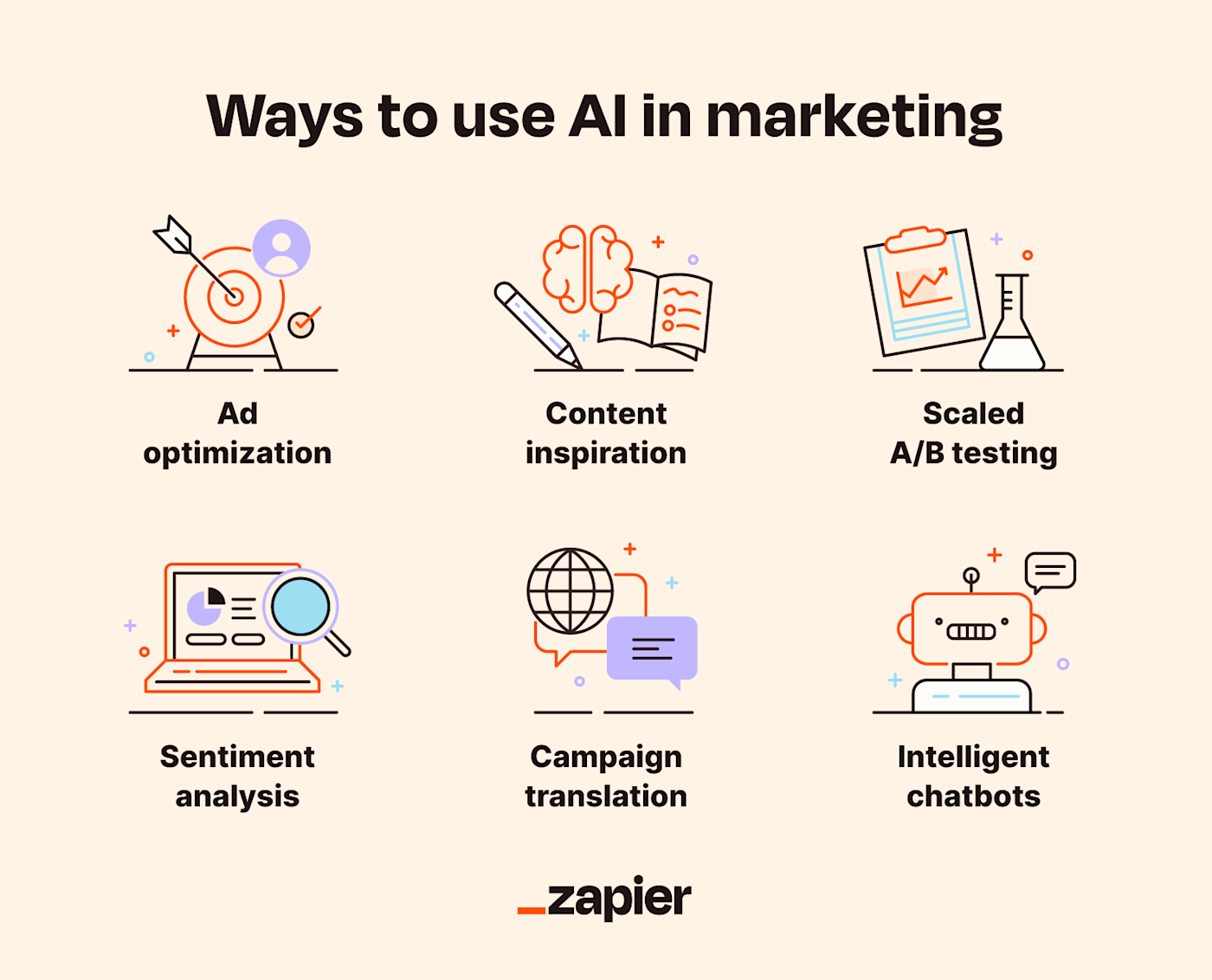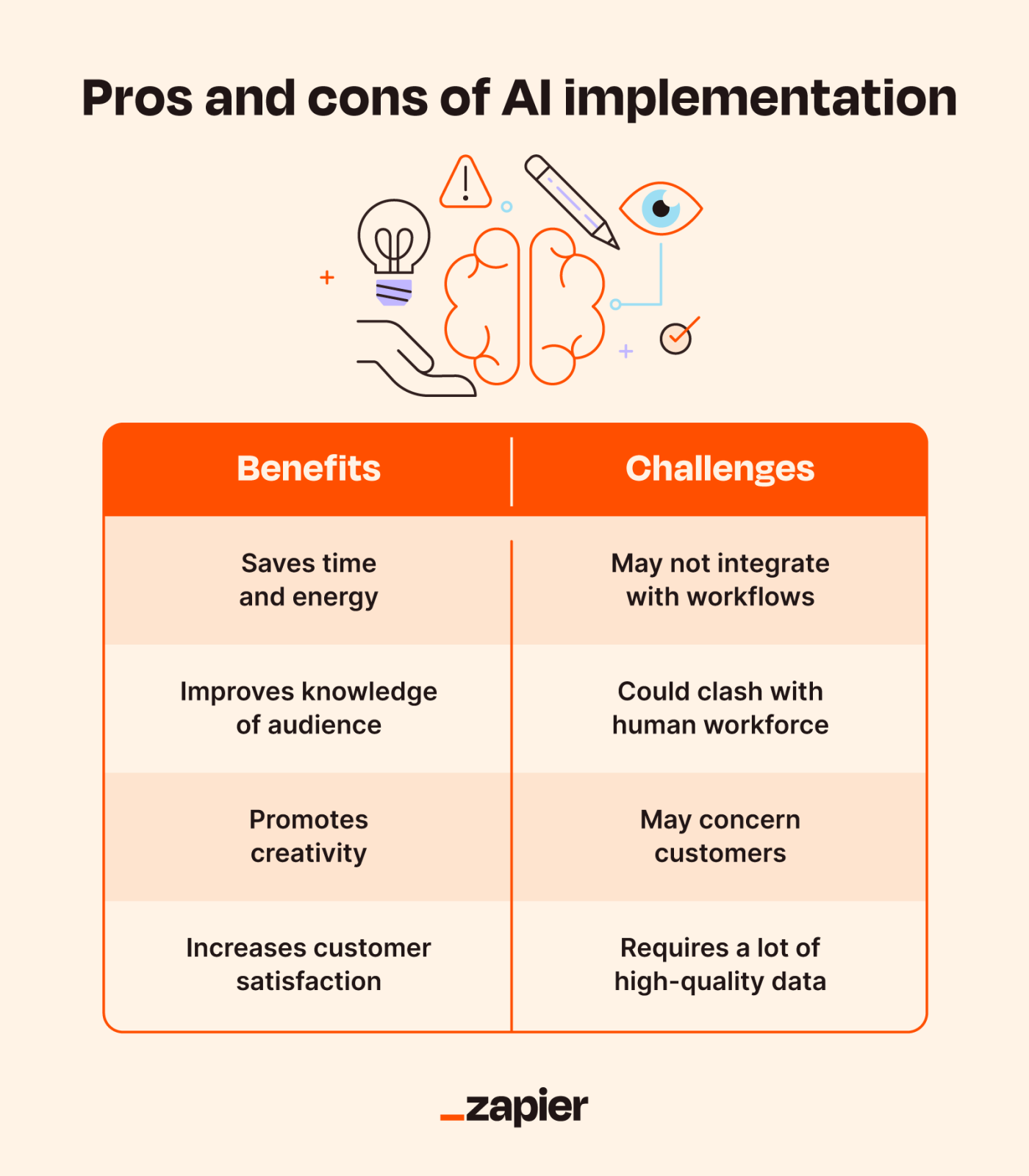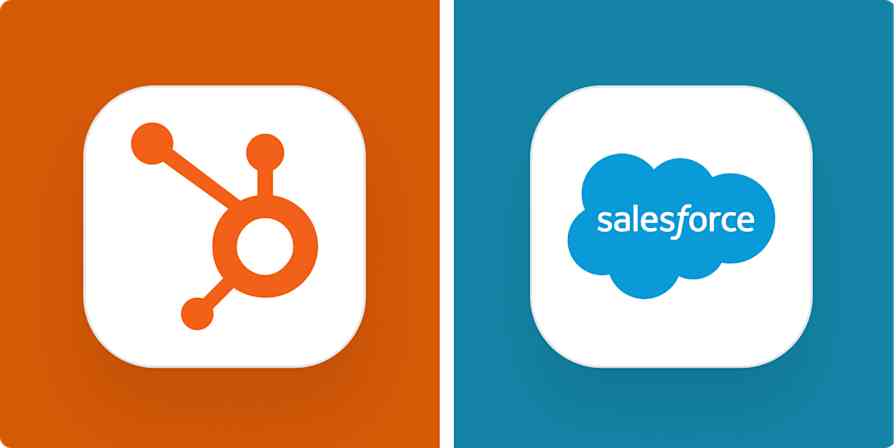Seemingly overnight, artificial intelligence (AI) writing became really...intelligent. As a content marketer, learning that ChatGPT and other large language models (LLMs) were creating entire SEO articles that sound pretty close to human writing was a bit chilling.
While AI marketing has a long way to go before it could replace me, it's already quickly changing the marketing landscape, and I expect that the biggest changes are yet to come. In this guide, I'll unpack what AI in marketing really means and how you can utilize it to do human-grade work, saving you time and bringing your campaigns to life (artificial life?).
Table of contents:
What is AI marketing?
AI marketing refers to all the ways AI technology can help you carry out successful marketing efforts. It mostly comprises the tools that use customer data to generate and deliver the best-targeted messages at the best times possible. But it also encompasses everything from AI creating blog outlines to chatbots that learn from their interactions.
For marketers, AI marketing saves huge amounts of time that they would otherwise spend manually analyzing data and developing targeted campaigns. For consumers, it makes it more likely that they'll see the content they like, which can either excite them or creep them out—if not both.
Benefits of using AI in your marketing strategy
Frankly, if you don't integrate AI into your digital marketing efforts, there's a good chance your competition will leave you in the dust. AI supplements human intelligence to make processes drastically more efficient and effective than they've ever been, and it's only getting better from here.
Apart from the whole "don't get left behind" sentiment, here are some concrete reasons you should integrate AI into your digital marketing efforts.
Gives humans more time for strategic work: AI can collect user data and use it to develop insights in a fraction of the time it would take a person to do so. This frees up your team's time to focus on more important tasks, like campaign strategy development, including how to best leverage AI in upcoming campaigns. For example, it would take someone a significant amount of time to analyze a marketing campaign's performance and identify areas for improvement. An AI tool could perform that same action in seconds.
Refines your personas: Use AI insights to improve your understanding of your customers and adjust your personas to more accurately reflect them and their needs and identify topics and areas of interest to them.
Sparks creativity: ChatGPT may spew out some ludicrous concoction of phrases and sentences pieced together like a janky puzzle, but hey—it can certainly get the creative juices flowing. When you're at a loss for words or ideas, have AI come up with something. Even if it isn't perfect, it may provide a trailhead toward better creative ideas.
Increases customer satisfaction: AI makes it easier to anticipate user needs by learning from their behavior. For example, you can use AI to analyze past customer concerns through post-purchase surveys or measure how users perceive your marketing efforts.
Improves personalization: AI can dig into tons of customer data—like what people browse, click, or buy—and use it to personalize messages, offers, and experiences that matter most to them. And with generative AI, you can spin up all those content variations automatically, so you're not stuck manually tweaking every little thing for each segment.
Better targeting and campaign performance: AI can help you put your marketing dollars where they'll make the biggest impact. By analyzing behavioral and demographic data, it finds the audiences most likely to engage, and then figures out the best ad placements, formats, channels, devices, times, and creative elements to reach them. AI tools can also dynamically optimize and automate campaigns, tweaking bids, budgets, and creative elements based on what's working.
Practical use cases of AI in marketing

Let's get granular with AI marketing—how can you use it to improve your day-to-day initiatives? I consulted with my colleagues in marketing to compile some practical use cases for AI.
Ad enhancement and targeting
Buying ads used to be a glorified guessing game, but AI changes that. By digging through historical performance, demographics, and contextual clues (like time of day or even the weather), it can predict what creative, platform, and placement combo is most likely to work. AI can watch your campaign like a hawk, adjusting bids, shifting budget, and testing headlines or images on the fly.
This results in less wasted spend, better-performing ads, and more high-fives from your boss. And most ad software has AI built in, so it's all happening in the background.
Content ideation and optimization
Coming up with fresh content every week is exhausting—AI helps you breathe without watering down your brand. It's great at analyzing competitor content, identifying trending topics, and suggesting unique angles based on market gaps.
When it comes time to write, it can flag grammar issues, tighten up your tone, and reshape your draft for whatever format you need—social post, blog, video script, email subject lines, better phrasing for a CTA, or any other piece of content marketing you need.
SEO
AI takes the grind out of technical audits and large-scale keyword research. It can crawl thousands of pages, flag issues, analyze SERPs for intent patterns, and identify semantic keyword clusters faster than any human team. AI SEO tools also help you plug content gaps, find link-building opportunities you might've missed, fine-tune content to match search intent, and even draft outlines or blog posts to get you started.
However, relying solely on AI for SEO content is risky. Google's emphasis on E-E-A-T (experience, expertise, authoritativeness, trustworthiness) means purely AI-generated content often needs significant human refinement to actually rank well and resonate.
Scaling A/B testing
A/B testing gets tedious, especially if you have a lot of potential options. AI makes it possible to take A/B testing to A/Z testing, comparing the predicted success of different headlines, images, CTAs, and layouts in seconds.
AI can predict which combination will perform best far quicker than traditional sequential testing. This allows for rapid optimization cycles, which is especially useful on high-traffic websites or landing pages where even small conversion lifts can have a big impact.
Sentiment analysis
AI can also help you scale data collection to uncover your audience's feelings, beliefs, and desires. Utilize it to scrape the web for your market's social media posts, reviews, forum responses, and more to develop insights that guide your marketing efforts.
Many companies use AI for real-time brand monitoring, flagging potential PR issues early, feeding insights directly to product teams, and understanding competitor strengths and weaknesses through their customers' eyes.
Making campaigns multilingual
Through neural machine translation (NMT), AI can translate text from one language to another by predicting sequences of words. Say goodbye to awkward mistranslations and loss of colloquial phrasing in multilingual marketing initiatives—NMT can translate text to sound natural in any language.
That said, don't entirely rely on NMT—my company implements it, and from our experience, it's best to have a native speaker check for accuracy, as different regions can have different cultural nuances, even within the same language or dialect.
Intuitive customer-facing chatbots
Everyone's been stuck online with an incompetent chatbot, wanting nothing more than to speak to a real human. Machine learning has opened the door to intelligent bots that better understand user intent, not just keywords.
Chatbots can integrate with CRM data to provide personalized responses and handle common queries 24/7. Crucially, sophisticated bots are programmed to recognize when an issue requires human empathy or complex problem-solving and execute a seamless handoff to a live agent.
And with accessible tools like Zapier Chatbots, you can build these kinds of customer-facing bots in minutes.
Personalization
AI makes 1:1 personalization scalable. From dynamic emails to tailored product recommendations, it can deliver real-time content based on a user's past behavior, demographics, or even psychographics. Predictive models anticipate what a customer needs before they know it, while generative AI helps create personalized landing pages, emails, and offers in seconds. It's personalization that actually feels personal—and doesn't take a full team to pull off.
Predictive lead scoring
AI has completely reshaped how marketers manage leads. Instead of relying on gut instinct or static models, machine learning now helps you pinpoint which leads are most likely to convert and why. These systems constantly update based on user behavior, so your lead scoring adapts in real time. That means your sales team can focus on the right people at the right time.
Tools like chatbots and personalized shopping experiences also play a role, capturing more nuanced data and illuminating the unique factors that motivate each lead.
Market research
AI gives your market research team a sixth sense (without the whole "seeing dead people" thing). Instead of relying solely on surveys or focus groups (which are limited, expensive, and often dated by the time they're analyzed), AI lets you tap into a firehose of unfiltered, real-world data, like social posts, product reviews, Reddit threads, news stories, and even images and video. Natural language processing (NLP) sifts through it all to spot emerging trends, shifts in sentiment, unmet customer needs, and pain points.
Market research tools can identify behavioral clusters within your target audience that aren't immediately obvious. This means finding segments based on how they interact online, what content they consume, or their propensity to purchase, leading to far more nuanced and effective targeting.
Dynamic pricing
Dynamic pricing isn't just for airlines and concert tickets. These days, it's making waves in eCommerce and even B2B SaaS.
AI-powered tools can look at demand, competitor pricing, inventory, seasonal trends, and even how individual users behave on your site to find the right price in real time to boost both revenue and conversion.
I've seen retailers subtly adjust prices throughout the day to maximize margins without scaring off price-sensitive shoppers. Some are even personalizing offers, tailoring discounts to a user's behavior or likelihood to buy. Dynamic pricing is powerful, but it needs to be handled carefully to avoid making customers feel like they're getting the short end of the stick.
Predictive analytics
Predictive analytics is where marketing shifts from reactive to proactive, using historical data and AI to make smarter bets about what's going to happen next. That might mean identifying which customers are likely to churn based on things like declining engagement or a spike in support tickets. It could also mean forecasting a customer's lifetime value so you know who to prioritize with your marketing dollars.
Predictive analytics software can help forecast how well a campaign is likely to perform before it goes live—analyzing your audience, messaging, and channels and flagging weak spots before they become expensive mistakes.
Lead enrichment
Strong sales starts with strong data, and AI makes lead enrichment way less of a grind. Instead of wasting time Googling every new lead when all you have is a name and email, AI in data enrichment tools can automatically scour the web to fill in the blanks—job title, company size, location, social media, tech stack, even recent company news.
With richer info, your marketing team can go way beyond the generic "Hey there" emails. You can reference relevant news, tailor messaging to their industry, and make outreach feel personal (because it actually is).
Challenges of implementing AI in marketing

If you've had your eye on the news (or have felt that eerie sensation when the targeted ads are a little too targeted and timely), you already have an idea of why implementing AI marketing isn't always rainbows and butterflies. I'll unpack some of these challenges.
Configuration difficulties: AI implementation warrants expertise and talent. Not only must the team implementing it understand AI, but they also need to understand the intricacies of your internal tooling and how to configure AI tools for your existing workflows.
Connection with human talent: Can humans and robots coexist? Sometimes, but it isn't always easy. AI should be deployed to enhance and supplement the skills of your workforce, helping to save their time and energy (ultimately making you more profitable). That said, it could throw a wrench in existing processes and cause more harm than good if not done carefully.
Customer anxieties: If you were to poll the public asking whether they feel comfy with Big Brother watching their every digital move, I'd bet the majority would say no. AI requires collecting data from consumers' online activity and using it to draw insights. When deploying AI, be sure to respect users' data privacy wishes to avoid getting in legal and financial trouble.
Need for high-quality data: Along similar lines, AI (especially in the case of marketing machine learning) requires a lot of data and time to get good at drawing insights and making predictions. Plus, that data has to be accurate and relevant. Before implementing it, you should confirm you have access to that data (or have experts who can program AI to find it).
Best practices for implementing AI in marketing
Here's a breakdown of each best practice for AI marketing implementation. Following them helps ensure your AI investment doesn't tank your campaigns (or your credibility).
Start small and focused: Instead of trying to overhaul your entire marketing org overnight, identify a specific problem where AI can add quick, measurable value. That might be automating lead qualification, optimizing email send times, or using a chatbot to cut down on support tickets. Starting small helps you test assumptions, build internal buy-in, and avoid the common pitfall of bloated, expensive implementations that never quite get off the ground.
Ensure data quality and accuracy: AI is only as good as the data you feed it. Before you deploy any AI tool, audit your inputs. Are your customer profiles complete? Are lead sources tagged consistently? Is your analytics pipeline clean? Garbage data leads to garbage insights, and in AI, that means inaccurate predictions, awkward personalization, and campaigns that backfire.
Choose the right tools for your maturity level: Match your toolset to where you are, not where Gartner says you should be. If you're a small team just getting started, an AI-powered copy assistant or smart segmentation tool might be enough. More advanced teams might layer in predictive analytics or marketing mix modeling. Choose tools that solve real problems—not ones that impress your board for five minutes and then gather dust.
Keep humans in the loop: AI is great at scaling tasks, but it's terrible at judgment, nuance, and context. Use AI to do things like sort data, generate variations, or spot patterns, but always have a human sanity-check the output. Creative teams should still approve content. Analysts should still vet forecasts. And customer-facing teams should still review automated responses for tone.
Watch for bias and hallucination: AI reflects the data it's trained on, which means it can reinforce harmful stereotypes, misinterpret diverse customer behavior, or make up facts entirely. Especially in tools like chatbots, copy generators, and predictive models, you need safeguards. Regularly audit outputs for accuracy, use diverse datasets, and train your team to spot bad AI behavior.
Prioritize customer experience over cool tech: Your goal should be to improve your customers' experience, not experiment with fancy technology. Just because you can auto-personalize every line of an email doesn't mean you should. AI should make things faster, smarter, or more human—not more robotic. Before launching anything AI-powered, ask: will this make the customer's life easier, clearer, or more helpful? If the answer is no, rework it.
Build a feedback loop early: AI needs feedback to improve, and your team needs visibility into what's working and what's not. Bake in feedback loops from the start. That could mean monitoring chatbot transcripts, reviewing content variations before they go live, or benchmarking predictive scores against actual conversions. Your marketing team needs to understand why AI made a decision, and your data team needs to know when it's getting things wrong.
Stay flexible: What feels cutting-edge today could be table stakes next quarter—or a cautionary tale next year. Build your AI stack with flexibility in mind. Choose tools with open APIs, strong integration support, and clear roadmaps. And avoid long-term lock-in unless the platform delivers massive value.
How to start using AI in marketing in 5 steps
Don't get me wrong—there's no single AI platform that will meet all of your needs. Every platform serves a different purpose, and with the rate AI is advancing, nearly every platform will deploy AI in some shape or form in the coming years. That said, here are some important considerations to remember when choosing apps to take care of your AI marketing needs.
Identify gaps and opportunities: Would automating a certain task free up a significant amount of time? Is there a specific marketing sub-department that's lacking? Prioritize your time deploying AI in the places where it will most positively impact your bottom line and employees.
Diversify the ways you use AI: Some platforms may help with blog copy optimization, while others may help with ad campaign personalization. AI is developing at lightning speed, so always keep your eyes peeled for opportunities to expand the ways you use it.
Determine size of investment: Would deploying a certain tool require access to sensitive or expensive data? Would you need to hire new talent to make it worth it? Is the tool itself expensive? Compare these costs to the estimated benefit of investment and spend your money wisely.
Explore your options: Before you dig out the corporate credit card, make sure you do some homework and understand what each tool does. There's a lot of uncertainty surrounding AI tools and their efficiency, as not all tools work the same way. Explore available AI marketing tools within your budget, and read user reviews before buying.
Audit your current tools: Once AI began to make its impact in the marketing world, almost every app out there has since experimented with it. Check if the platforms you use have new AI-powered features.
Add AI to your marketing tech stack
AI is rapidly changing the way organizations operate. In a matter of years, it'll be difficult to identify any field that AI hasn't touched. Don't get left behind—stay on top of the trends and integrate AI into your organization's marketing strategy.
If the tools you use don't have AI built in, you can add AI to them with Zapier. Use natural language to build powerful workflows, connect your favorite AI tools to thousands of apps, and automate everything from lead scoring to content creation—no code required.
Zaps: Create automated workflows that connect your favorite AI apps, triggering actions when specific events happen.
AI by Zapier: Bring the power of AI into any of your automated workflows at any step.
Interfaces: Build custom, visual interfaces (like client portals or dashboards) that collect information and trigger your workflows without any design skills needed, and include AI-powered fields.
Tables: Store, organize, and act on your information in powerful spreadsheet-like databases that can trigger automations when data changes or fill in information using AI.
Canvas: Visualize and design complex workflows using AI and an intuitive drag-and-drop editor.
Chatbots: Create AI-powered conversational assistants that help customers get answers, submit information, or trigger workflows through natural language.
Agents: Deploy automated AI agents that can perform tasks across multiple apps.
Copilot: Get personalized automation suggestions and assistance as you build, understanding what you want to do in everyday language.
MCP: Connect your AI assistant to any of the integrated apps within Zapier's vast ecosystem.
For example, you could analyze Facebook and LinkedIn campaign performance with Zapier Tables and Agents, build an AI chatbot to capture leads, or get started with one of these templates.
Consolidate LinkedIn and Facebook Ads and run weekly reports using an AI Agent.
Increase lead engagement with a conversational chat experience embedded on your website.
Zapier is the most connected AI orchestration platform—integrating with thousands of apps from partners like Google, Salesforce, and Microsoft. Use interfaces, data tables, and logic to build secure, automated, AI-powered systems for your business-critical workflows across your organization's technology stack. Learn more.
AI marketing FAQ
AI is complex and expensive. And it very well should be seeing as it now drives our cars, produces our art, does our marketing, and keeps our kids occupied for five-minute periods throughout the day. Here are some common questions marketing leadership may have when deciding whether and how to implement it in their processes.
How is AI used in marketing?
AI can be utilized in nearly every area of marketing. It's used to collect data, analyze that data, make decisions and predictions based on that analysis, generate personalized messages, optimize content, and more. It's like an expensive intern that does everything except make coffee.
Is investing in AI marketing good?
AI marketing is a wise investment for organizations that can afford it and that would benefit significantly from an increase in speed and the ability to deliver highly personalized content to its customers.
AI is definitely worth the investment—not only can it provide you with fresh and unique insights, but it can also save you a lot of time throughout every stage of your marketing campaign.
What's an example of an AI tool I can use in marketing?
You can use a lot of AI tools for marketing purposes. AI chatbots are particularly versatile, but other platforms like CRMs and SEO tools have built-in AI as well. Here's a list of great AI marketing tools, but honestly, most apps are incorporating AI at this point.
Related reading:
This article was originally published in May 2024. The most recent update, with contributions from Allisa Boulette, was in May 2025.










